Connected technology is permeating every aspect of our lives from the homes we live in, to the cars we drive and now, even the cities where we work. As smart cities gain popularity, smart buildings can act as the building blocks of a city’s infrastructure, but facility managers and building owners must get onboard with Read more
Industry Blogs
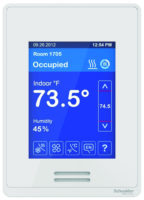
Connected technology is permeating every aspect of our lives from the homes we live in, to the cars we drive and now, even the cities where we work. As smart cities gain popularity, smart buildings can act as the building blocks of a city’s infrastructure, but facility managers and building owners must get onboard with – and trained on – smart technology first.
In commercial buildings, one way connected environments can be created is through heating and air conditioning systems that respond to both occupancy and room conditions. This level of automation not only makes it easier for facility managers to operate buildings and keep spaces comfortable, but it also helps save on energy costs and reduces environmental impact, without compromising comfort or safety.
Creating a Customizable, Independently Operated Environment
As many commercial buildings have a multitude of different spaces to tend to, using smart, connected technology to cater to the heating and cooling needs of each space is key to ensuring a simplified building management process as well as occupant comfort.

Variable Refrigerant Flow (VRF) technology paired with smart connectivity controls dynamically offers not only temperature controllability but also cost savings, allowing facilities to manage equipment, lighting, security and electricity remotely from a single interface. With the ability to connect the system to optional door, ceiling, window and carbon dioxide sensors, a building can truly become “smart,” so that the heating and cooling technology automatically adjusts based on in-room conditions.
In a hospitality setting such as a hotel, this can be paramount to securing return visitors. By deploying in-room controls with customizable interfaces within each individual room, the hotel can begin to position itself as at the forefront of a smart hotel experience. With controls capable of custom welcome messages to guests and providing real-time updates on in-room conditions, guests will feel like they’re in a modern, personalized environment.
Similarly, an office environment can benefit from connected HVAC technology. If you’ve ever worked in an office that blasts air conditioning or neglects to use it, you know that temperature can directly impact employee productivity. With connected HVAC technology, workers can feel comfortable, reducing opportunities for distraction and keeping them focused on the task at hand.
Using HVAC Technology to Reduce Environmental Impact
According to the General Services Administration, VRF technology can save users up to 30% on HVAC energy costs, ultimately as a result of their smaller design, which uses less material than older, traditional HVAC equipment. Because these systems also use advanced technology to control temperature, they are more accurate and have a decreased margin of error, extending the lifecycle of the system and reducing the likelihood of maintenance or repair.

With cities consuming nearly 80% of energy production worldwide and an equal share of global greenhouse gas emissions, it is time for change – for the planet and for the bottom line. Smart cities, with tech-savvy smart buildings communicating through the Internet of Things and running on energy efficient technologies, can make a significant impact on global emissions and the lifespan and health of our planet. For business owners, technologies like VRF, among others, can reduce energy waste and in turn, energy costs, while improving tenant productivity and overall indoor comfort.
Propelling the HVAC Industry Forward
The answer is clear: It’s time for building owners, facility maintenance professionals and installation professionals to work together to maximize the value of smart buildings and cutting-edge heating and cooling technologies. As smart technology continues to change the way we live and work, the HVAC industry is in a perfect position to grow, and smart buildings equipped with connected HVAC technology are just another step towards a world full of more productive – and comfortable – cities and citizens.
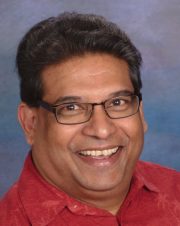 Malcolm Persaud is the National Sales and Product Manager – Commercial VRF for Panasonic’s Heating and Air Conditioning Group. Malcolm Persaud has a wealth of technical and sales leadership experience through the years with Sanyo and Panasonic. He was instrumental in Sanyo’s VRF successful sales launch and growth in the US market starting in 2005.
Malcolm Persaud is the National Sales and Product Manager – Commercial VRF for Panasonic’s Heating and Air Conditioning Group. Malcolm Persaud has a wealth of technical and sales leadership experience through the years with Sanyo and Panasonic. He was instrumental in Sanyo’s VRF successful sales launch and growth in the US market starting in 2005.
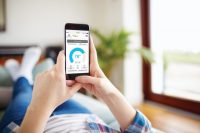
Homes are getting smarter as technology evolves, and devices like smart thermostats enable homeowners to create a perfect oasis inside their home while also lowering utility bills. As an HVAC expert, homeowners will look to you for guidance on choosing the right thermostat, so understanding the different variations and features of smart home technology is Read more
 Homes are getting smarter as technology evolves, and devices like smart thermostats enable homeowners to create a perfect oasis inside their home while also lowering utility bills. As an HVAC expert, homeowners will look to you for guidance on choosing the right thermostat, so understanding the different variations and features of smart home technology is key.
Homes are getting smarter as technology evolves, and devices like smart thermostats enable homeowners to create a perfect oasis inside their home while also lowering utility bills. As an HVAC expert, homeowners will look to you for guidance on choosing the right thermostat, so understanding the different variations and features of smart home technology is key.
To determine which thermostat will achieve a homeowner’s own personal degree of perfection, ask your customer these questions:
- How do you want to feel in your home?
A homeowner may not know what device or equipment they want, but they do know how they want to feel in their home. Asking them to describe their ideal environment and how they prefer the air around them to feel will help you get a sense for their individual level of comfort.  What do you hope to gain from having a smart thermostat?
What do you hope to gain from having a smart thermostat?
Is your homeowner looking for an easy way to control the temperature? Do they want to lower their energy bills or even-out the humidity levels in their home? Curate your smart thermostat recommendations around the homeowner’s greatest needs, which oftentimes are not mutually exclusive. Lennox’ iComfort S30 Ultra Smart Thermostat includes Allergen Defender, a feature that monitors and cleans the air in the home, and the ability to control temperature remotely from a smartphone.- What level of control do you want over the temperature and air quality in your home?
Some homeowners want to monitor their home temperature remotely any time of day, while others prefer to set the perfect temperature once and leave it alone. If your homeowner opts for the former, choose a smart thermostat that provides a granular level of control and extensive remote capabilities. For example, the iComfort S30’s Smart Away Mode uses GPS to detect how far away the homeowner is from the house and adjusts the temperature accordingly. On the other hand, Lennox’ iComfort E30 Smart Thermostat’s Perfect Temp feature allows the homeowner to set the desired temperature and the system will automatically adjust heating and cooling to maintain that setting. Identifying the homeowner’s perfect level of comfort is key to suggesting the optimal smart thermostat. - Do you want a thermostat that is compatible with digital assistants?
Some homeowners prefer to control temperature and air quality through a digital assistant. Lennox’ iComfort smart thermostats are compatible with assistants like Google Assistant, Apple HomeKit and Amazon Alexa to create the ultimate comfort experience.
 Smart thermostats not only provide a wealth of benefits to homeowners, including decreased energy usage and control over temperature levels, but they can also improve how you work and interact with customers.
Smart thermostats not only provide a wealth of benefits to homeowners, including decreased energy usage and control over temperature levels, but they can also improve how you work and interact with customers.
- Proactive troubleshooting. Oftentimes, smart thermostats will alert you when there is an issue with your customer’s HVAC systems. This allows you to proactively fix the problem, even before the homeowner is aware there is an issue. Through Lennox’ Dealer Portal, dealers can – when permitted by the homeowner – diagnose problems with the HVAC system and fix them remotely.
- Improved relationships with homeowners. Installation assistance and remote access provided by smart thermostats enable dealers to maintain and nurture relationships with the homeowner. Relationships are no longer one and done – you can be an ongoing resource for a homeowner with the touch of a button.
- Increased ease of installation. Smart thermostats don’t have to be difficult and time-intensive to install. For example, Lennox makes it easy through a four-wire installation with the S30 and E30. With faster and simpler installation, you can shift your focus to forming and nurturing long-lasting relationships with your customer.
Having a variety of options and capabilities allow both dealers and homeowners to find the ideal thermostat to meet their respective needs. Homeowners can surround themselves with perfect air, while dealers can provide higher levels of customer service. To learn more about how to help your homeowner find their perfect level of comfort, visit the Lennox website.
 Guest Blogger: Sweta Hari is the Director of Product Management for Controls and Indoor Air Quality at Lennox International. She and her award-winning team are responsible for ideating, developing and commercializing products that improve home efficiency and honor Lennox’ commitment to healthy and comfortable air. With an intense focus on the HVAC dealer and homeowner’s customer experience in mind, Sweta and her team deliver industry-leading products that are recognized for their thoughtful design and overall functionality.
Guest Blogger: Sweta Hari is the Director of Product Management for Controls and Indoor Air Quality at Lennox International. She and her award-winning team are responsible for ideating, developing and commercializing products that improve home efficiency and honor Lennox’ commitment to healthy and comfortable air. With an intense focus on the HVAC dealer and homeowner’s customer experience in mind, Sweta and her team deliver industry-leading products that are recognized for their thoughtful design and overall functionality.
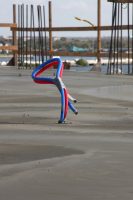
With plumbing hygiene becoming a bigger concern in our industry, installers and building owners are looking to innovations that will ensure both efficiencies and reduced liability for their domestic water systems. For these commercial plumbing applications, professionals are starting to turn to pre-sleeved PEX in the slab. It’s an innovative solution that offers several benefits Read more
With plumbing hygiene becoming a bigger concern in our industry, installers and building
owners are looking to innovations that will ensure both efficiencies and reduced liability for their domestic water systems.

San Francisco, 2018 install with in-slab, pre-sleeved PEX
For these commercial plumbing applications, professionals are starting to turn to pre-sleeved PEX in the slab. It’s an innovative solution that offers several benefits for the contractor, owner and also the end user, including:
- Shorter pipe runs for less material usage and better pressure to the fixtures
- No hangers for less ladder time and faster installs
- No insulation required for easier, more efficient installs
- Long, flexible coils of pipe to eliminate fittings in the slab
And here’s where the safety factor comes in — because in-slab pre-sleeved PEX systems use shorter runs of pipe embedded in concrete, the water in the pipe is spending less time in the optimal bacterial grow zone (95°F to 115°F). Plus, the shorter pipe runs provide better pressure to the fixtures for higher velocity to minimize biofilm attachment and growth, especially compared to metallic piping systems.

San Francisco, 2018 install with in-slab, pre-sleeved PEX
In general, PEX is a superior product compared to metallic piping due to its corrosion resistance, freeze resistance, superior sound insulation qualities, smoother surface for reduced pressure loss and lighter weight for easy maneuverability on the job site.
Also, because PEX has stable pricing compared to copper, it’s easier to confidently bid a job without having to worry about price increases. And because PEX connections don’t require flame, there’s no need for fire watch requirements on a job site, adding to the cost-effective benefits of the system.
So you can see how adding pre-sleeved PEX in the slab can offer great benefits to your commercial plumbing systems. Now, the next question is, what can you buy and where do you get it?
Some PEX manufacturers offer their pre-sleeved piping with color-coded red and blue HDPE corrugated sleeving to easily identify hot and cold water lines. The HDPE sleeve protects the pipe in the slab and also makes it easier to remove, if necessary, without having to break up the slab. Pipe sizes are typically available from ½" to 1", but can vary by manufacturer.
To learn more about the pre-sleeved PEX offerings in your market, check out your favorite PEX manufacturer’s website; or to learn more about PEX in general, visit one of the plastic piping association websites at plasticpipe.org or ppfahome.org.
 Guest Blogger: Kim Bliss is the content development manager at Uponor. She can be reached at kim.bliss@uponor.com.
Guest Blogger: Kim Bliss is the content development manager at Uponor. She can be reached at kim.bliss@uponor.com.
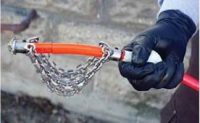
By David W. Neville, S.S. White Technologies, Inc. In homes, small businesses, and large industrial settings, plumbing systems and drains need cleaning. In many of these settings drain cleaning consists of pouring chemicals down the pipes every few years. In other places and businesses, drain cleaning is a much more substantial job. Restaurants and food Read more
By David W. Neville, S.S. White Technologies, Inc.
In homes, small businesses, and large industrial settings, plumbing systems and drains need cleaning. In many of these settings drain cleaning consists of pouring chemicals down the pipes every few years. In other places and businesses, drain cleaning is a much more substantial job.
Restaurants and food businesses put undue stress on their drain systems with all of the grease and food waste they discard every day, requiring heavy-duty industrial drain cleaning equipment to remove troublesome blockages.
In older homes or businesses that are located next to old trees and their root systems, the situation is similar, as tree roots can infiltrate drains and pipes, clogging them severely.

Flexible shaft construction
When blockages like tree roots or a longtime build-up of grease come into play, chemical solutions do no more than tickle blockages. This is why there are a wide variety of industrial drain cleaning devices on the market today—there is a need for machines that can clean severely blocked drains quickly, cheaply, and efficiently.
Types of Drain Cleaning Machines
Industrial strength drain cleaning machines can be divided into roughly three types: hydro-jetting machines, drain snakes, and power rodding machines.
Hydro-jetting is the process of using a high-pressured flow of water to scour the interior surfaces of the plumbing pipes. This removes scale, grease and other debris that has built up inside the pipe walls over time. Drain cleaning machines using this method work in more or less the same basic way.
First, the operator inserts a hose that’s connected to a tank of water into the clogged pipe. The hose can withstand the high-pressured water that’s sent into the pipes, and a specialized machine pressurizes water from the tank. This hose then delivers a high-pressure jet of water into the pipe, the pressure of which varies depending on the condition of the pipes. In general, machines may pressurize the water up to a 5,000 psi or more and deliver as many as 20 gallons of water per minute. The process of removing the blockages from the pipe involves working with gravity. This type of machine can be quite effective at drain cleaning, but it does have downsides, including freezing in cold temperatures and the various dangers that can come along with using high pressure.
Perhaps the most common kind of drain cleaning machine is called a drain snake. Drain snaking has a simple operation that is often effective, especially for home plumbing use. Industrial strength drain snakes are, more or less, a long spring cable with corkscrew on the end, attached to a motor. The cable is inserted into the clogged pipe, and the motor feeds the cable into the pipe. With luck the cable or corkscrew at the end snags any blockages in the pipe and can then be pulled out with the blockages. This kind of drain cleaning machine is common, but it is often not suitable for more challenging drain cleaning applications.
The last of the three most common drain cleaning machines work via a method known as “power-rodding.” Developed as an alternative to drain snake machines, power rodding systems use a flexible metal cable that threads into drain systems and around bends and joints. A cleaning head with very sharp teeth is installed at the leading end of the cable. This cleaning attachment is sized to the diameter of the pipe being treated. An electric motor rotates the cable, causing the sharp cleaning head to turn at a high rate of speed. This action obliterates the obstruction blocking the pipe, shears off any protrusions such as tree roots and shaves away years of sludge buildup. The high-speed cutting tool shreds the obstructive material blocking the pipe into small fragments that are easily flushed away when the flow of water is introduced into the pipe.
While all three of these methods are viable depending on the application, all three have downsides and issues. However, one technology – flexible shafts—when applied to drain cleaning machines, can help to rectify many of these issues, and serve as a complement to other drain cleaning machines.
Flexible Shafts in Drain Cleaning
A flexible shaft is a precisely defined and configured nested group of springs, tightly wound so that it has torsional or rotational strength, as opposed to the tensile strength found in standard wire rope or cable to which flexible shafts bear a resemblance.
What makes flexible shafts specifically useful is that flexible shafts can bend, but also still rotate. In other words, a flexible shaft transmits rotary motion much like a solid shaft, but it can be routed over, under, and around obstacles that would make using a solid shaft impractical.
Flexible shafts are used in a number of applications, including advanced aerospace technologies. Their flexibility, combined with tensile strength, makes flexible shafts a force in the tight, twisted environments often encountered in drain cleaning.
When compared to other drain cleaning technologies, drain cleaning machines using flexible shafts are advantageous in that they are smaller, lighter and more flexible; easier to clean; and enable the use of a camera in drain cleaning.
Flexible shafts are as strong as other kinds of cables used in drain cleaning, but they are smaller and lighter, as well as more flexible. These characteristics are helpful in two ways. First, flexible shafts’ low weight and size is useful primarily for the operators of drain cleaning machines in using and transporting the equipment to the job site. The cables traditionally used in drain cleaning can be large and heavy, as well as difficult to transport. In addition, traditional drain cleaning cables, which more or less resemble extremely long, tightly wound open springs, are not very flexible. This can make maneuvering the cables through drains difficult. Flexible shafts are notably more flexible, so they can be useful in drain cleaning applications in which the clogged pipes are particularly bendy or hard to navigate with the stiffer traditional drain cleaning cables.
Another advantage flexible shafts have over traditional drain cleaning cables is that they are exceedingly easy to clean. Traditional drain cleaning cables are like large hollow springs—springs are by nature open to the air, so in drain cleaning, as the cable moves through the dirty drain, unclogging debris, it is likely for that debris to become lodged in and on the cable. Being that these cables are long and tightly wound, it is a hassle for drain cleaners to maintain them and keep them clean. Flexible shafts, on the other hand, are covered in a protective casing, making clean-up after a drain is cleaned much easier.
Lastly, flexible shafts can be advantageous to use over other drain cleaning methods in certain situations because they clean drains without water, which enables the use of a camera. When hydro-jetting, camera use is impossible due to the high volume of pressurized water used. Cleaning a drain using a machine based around a flexible shaft (or other dry cable) allows a camera to be fed into the drain just behind the spinning end of the cable. This can be helpful as it allows drain cleaners to see what exactly is blocking the pipe, enabling them to adjust their cleaning method if need be.
One notable example of flexible shafts being used in drain cleaning to great effect is their use by Clog Squad, a Michigan-based drain cleaning contractor. According to Clog Squad, it had been searching for a lighter, safer and easier way to clean drains, and found it in the flexible shaft.
The Clog Squad’s Clog Dog drain cleaning machine is based around the use of a flexible shaft to clean drains, and according to Clog Squad, the use of flexible shafts with the Clog Dog has made the job cleaner, safer, and way more effective.

Clog Dog flex shaft with chain knocker accessory. Photo courtesy of Clog Squad
Clog Squad gets its flexible shafts from S.S. White, one of only three flexible shaft manufacturers in the United States. S.S. White has helped Clog Squad cleaning by ensuring that its flexible shafts are always designed to exact specifications using proprietary software.
Overall, all of the three main methods to industrial drain cleaning have a place in various applications. It is clear that flexible shafts are a light, powerful, clean, and effective new method to clean drains that can serve as an excellent option in all kinds of industrial drain cleaning applications.
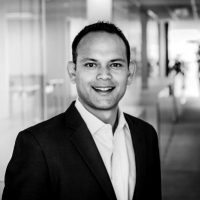
According to a Kabbage survey of construction firms, 28 percent cited cash flow as the biggest challenge during their first year in business, outweighing finding new customers. As your business grows, the struggle to manage a positive cash flow may continue. Towards the end of a project subcontractor fees, invoices, inspection fees and finish materials Read more
According to a Kabbage survey of construction firms, 28 percent cited cash flow as the biggest challenge during their first year in business, outweighing finding new customers. As your business grows, the struggle to manage a positive cash flow may continue.
Towards the end of a project subcontractor fees, invoices, inspection fees and finish materials are due all at once. If you front-load payments or don’t track outstanding bills, you may find yourself undercapitalized.
The good news is that there are practical steps you can take to structure your cash flow and stay ahead.
Align project cash flow with company cash flow.
Plan to pay your company’s quarterly taxes, marketing costs, insurance premiums and other predictable expenses when big bills for your project are not due. Additionally, if you invested in capital equipment, you may be able to claim depreciation and other write-offs to minimize quarterly tax payments and free up cash.
You can also work with your accountant or use tools to analyze your finances and make small adjustments to smooth out the peaks and valleys in your cash flow.
Break up your invoices.
Customers appreciate prompt, smaller bills because it helps them manage their own cash flow. John Montijo took several years of trial and error after starting his construction business in Staten Island, New York to figure out the best way to ease the burden on his business and his customers.
John realized that he didn’t have to follow the industry standard of billing in three or four large installments over the course of a job. Instead, he broke his invoices up further, billing after each stage of a job: for demolition, sheetrocking, windows, insulation, plumbing, electrical work and so on.
Instead of writing a check for $25,000 on a $100,000 job, John’s customers can pay $10,000 at a time, a cash flow win-win for both sides.
Have a cushion.
Dennis Moloney of Best Restorations in Delray, Florida, doesn’t like when his company’s cash flow gets tight.
This forces him to devise new budgeting strategies to stay ahead. Dennis takes advantage of early-payment discounts from his vendors to save money and utilizes lines of credit to bridge cash-flow gaps.
“In 14 years, I’ve never bounced a check or been overdrawn, and I want to keep it that way,” says Dennis. “I borrow to make sure I’m always looking good. “
 Aditya Narula is the head of customer success at Kabbage, a FinTech company helping small businesses get access to working capital.
Aditya Narula is the head of customer success at Kabbage, a FinTech company helping small businesses get access to working capital.

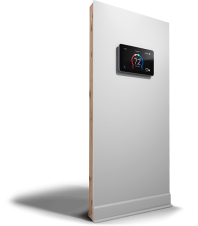 What do you hope to gain from having a smart thermostat?
What do you hope to gain from having a smart thermostat?